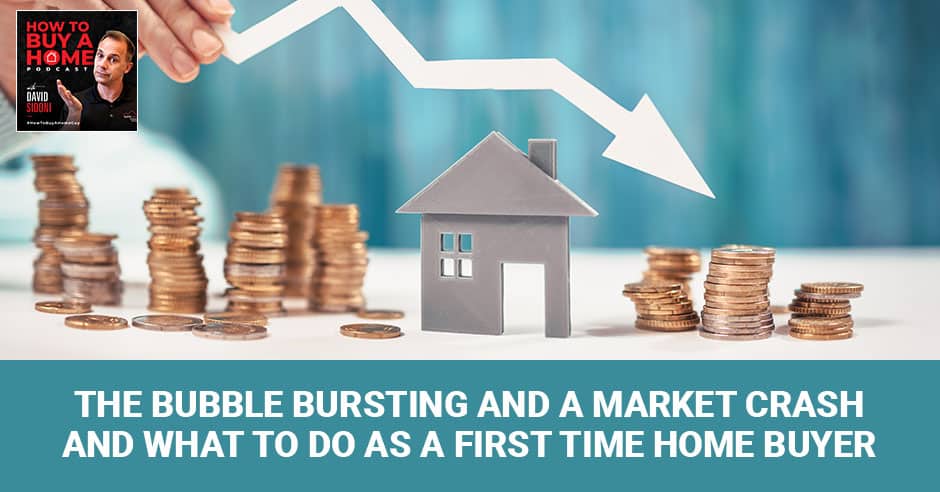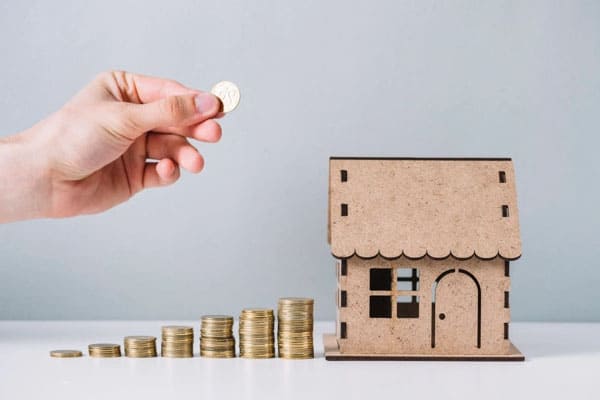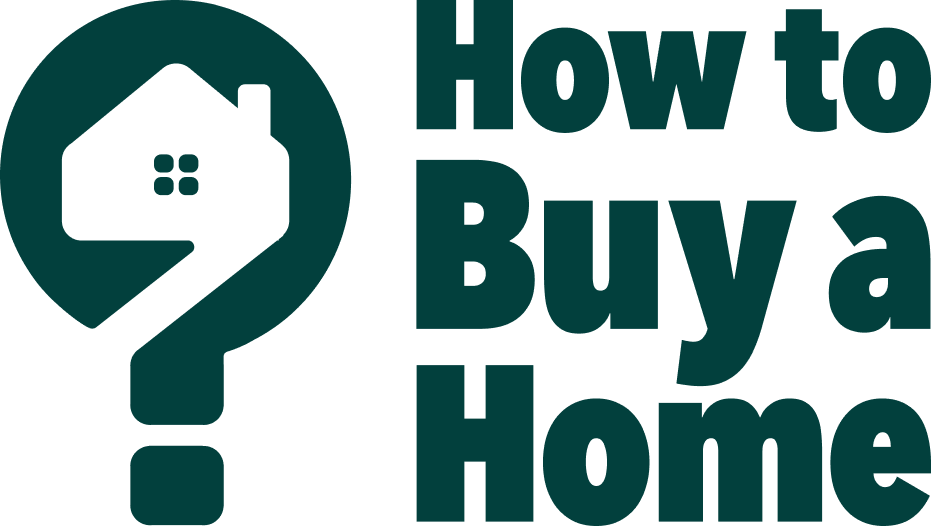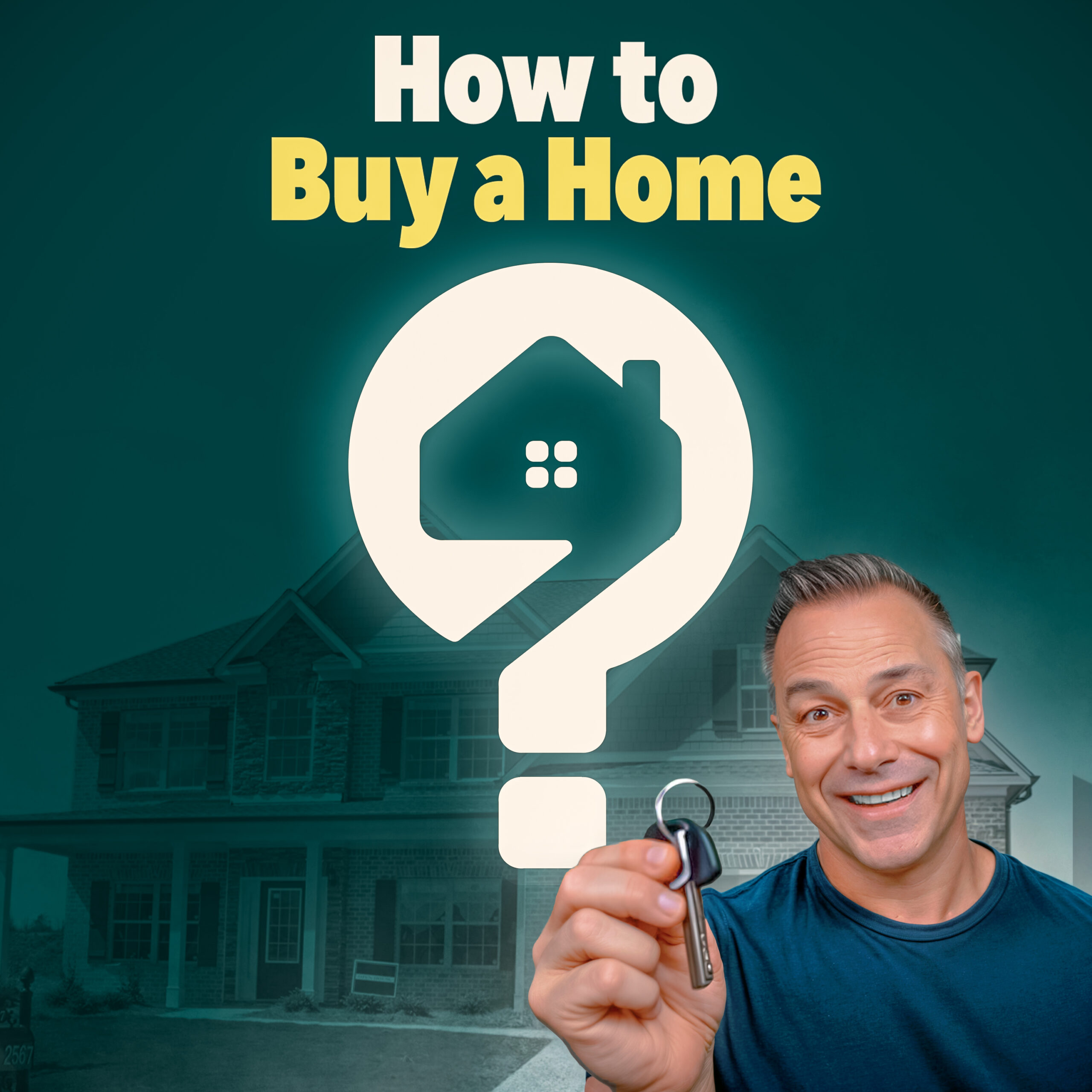
The housing market is INSANE in 2021 and early 2022, so it HAS to be a bubble ready to burst, right? This can’t keep going like this, so it’s gotta crash, right? Well….I don’t want to be pollyanna, rainbows and puppies kinda guy who sounds like they are trying to sell you something that will always be worth more than you paid for it, but there is some pretty compelling data that says this is NOT like the last time, and the bubble may be more of a slow rolling train that will keep on trucking for a little while, and only slow down later on down the line, not jump the tracks.
—
The Bubble Bursting And A Market Crash And What To Do As A First Time Home Buyer
Fear Sells
Your rent sucks and you want to stop renting, but you are afraid. Why? Where did that fear get planted in you? Fear is usually due to not knowing, wondering what that bump is in the night, and imagining it to be way worse than the stray cat that is outside your window. Fear sells and people like it. When it comes to buying a home, since things are going up in prices, I hear a lot of this, “What about the crash of 2008? You got to put 20% down because of the crash. This is the same thing all over again.” It is a great headline, a scary talking point, but it is totally wrong. Let’s talk about it.
—
What is up, my How To Buy A Homies? I’m still captain positivity working to bust all the naysayers and let you know you can do this. In fact, for most of you out there renting, you should do this. Did you know that the average age for a first-time home buyer in 2021 was 33 years old? Since 1991, the lowest average ever all the way back many years was only one year when it dropped to 28 years old. The average over those 40 years has been 31 years old. In the last years, when interest rates have been dropping and rents have been skyrocketing, it has gone up from 31, 32 to 33 in 2021.
Let’s lower that now. It is time to crush the confusion and get rid of the fear. If you are renting, don’t let a lack of knowledge hold you back. Let’s lower that age because not a lot of you out there are 25 to 33 years old and still living with your mama. No judgments if you are. In fact, you can save a heck of a lot faster than all the renters out there, but still, why is that number so high? For 33 years old, that is a lot of wasted rent money.
It is probably because no one gave you the confidence to tell you, “You can do this.” I have 73 times in episodes already, but no one, besides me, think of it this way. What if they built a perfectly safe new road to your work and it would save you 40 minutes a day in travel time, and you didn’t want to drive it because someone told you it was scary and unsafe? What a waste.
I want to back up the forecast episodes that I gave for all the super negative freakout, monsters out there that are coming up to you and telling you that road is super dangerous and you should spend 40 minutes a day on the other road and play it safe. I imagine it goes down to something like this. I’m going to give you the ammunition to retort. First, they come up to you and say, “It is a bubble, terrible, and going to be a crash. Everyone is going to die.”
You say to them, “Can you tell me the pre-crash data that caused the crash? If we are doing the same thing again, you obviously know what happened before. It is happening again. What is that data? Tell me all about it.” When they stare at you blankly because they love all the drama and then you don’t know what the hell they are talking about, then you can look at them and ask this follow-up question, “How does that data compare from back then to what is happening now?”
[bctt tweet=”You can’t get money without any risks.” via=”no”]
Jumping Into Drama
Most of the time, the only thing they are going to say to you is, “Look how much prices are going up. It is insane. All the buyers are bidding like crazy because they think it is going to last forever. That is what happened the last time before the crash, so a crash has to happen again. It can’t keep going up like this forever.”
Congratulate them on getting a few things right in that statement, 1) Prices are going up insanely, 2) Buyers are bidding up homes, and 3) It can’t and won’t last forever. The facts from the experts in Episodes 62 and 63 agreed that prices are going up and went up insanely in 2021, but the insanity is slowing and the inventory is growing slowly too. The bidding wars should begin to taper off at some point.
As far as it is not lasting forever, “It can’t last forever. It is still going. How long do you think it will last?” You tag it with this, “Since you don’t know how long it will last and you assume it will crash without any knowledge or data, here are some facts for you.” You can tell them all this fun stuff. All that safe talk, how to be safe when you buy a home and not get in trouble, started a long time ago. It is the 20% down payment rule that has been preached by Dave Ramsey and a whole lot of other people with this holy guideline that will keep us all out of financial ruin.
The 2008 Crash
That rule was out there before the last run-up when many of you were not even born, starting in 1998. During that run-up from ‘98 and the early 2000s, the market took a huge crash in 2008. Everyone was so excited about that 20% down rule. It was an old philosophy that had been around for a long time, but it got too much credit for the market crash in 2008. Did people love to get up and say, “I told you so?”
What happened was during the crash, many homes went upside down. If you have never heard that term before, that is probably a very odd picture in your head. What it means is you owe more on your loan than the home is worth. Most people thought that this happened because people got in with low down payments and the market moved. When it crashed, then everyone was upside down or also what they called underwater, meaning the home was not worth the mortgage they had on it.
If they could not pay the mortgage, then they had no other alternative. They could not sell the home because it would not be enough to pay back the bank. They had no equity in their home. Foreclosures became the norm and then the apocalypse happened. Cats were sleeping with dogs and there was a fire in the streets. In some cases, low down payments contributed some to the crash, but there was so much more.

I could debate this forever with all things that I have mentioned in the previous show. The biggest thing, which I may have mentioned before, is my favorite stat that nobody talks about when they say that low down payments are bad, horrible, stupid, cause bubbles and the bubbles pop. What they say is the low down payments caused the crash of 2008.
It was not the low down payments that were such a huge factor in the crash. It was that people didn’t save their equity. If you buy a home and it goes up 35%, 40%, or 50% like it did the crazy times of 1998 to 2006, if you kept paying on your loan and didn’t borrow against your equity, profit, or that increased value in your home because remember, your loan amount is just the amount that you paid on the day that you bought it.
The equity might go up to 30%, 40%, or 50%, and that will increase the value of the home, plus whatever you have been paying over the few years because you will lower the principal a little bit. If the market suddenly dropped 35% in a few months like it did in 2008, and you have not increased your loan at all, you still got equity in the home. It is like you bought a Bitcoin at $40,000, then suddenly you looked at your phone and now it is worth $60,000. That is cool but you didn’t sell the Bitcoin right then. You just looked at it.
Suddenly, a few months later, it drops back to $40,000. What does that mean for you? Nothing. No harm or foul unless you took out equity from your home. This is the little secret thing that nobody talks about. To me and many other experts who have looked at this data, it is the whole reason why it crashed. It is people taking the equity out of their home and then it was much easier for them to go upside down, underwater, up, down, all around unless you took out equity.
HELOC
In the 1980s, HELOCs or Home Equity Line Of Credit, borrowing against the value of your home became a thing. It took a little while for people to get the hang of it and start using it for the banks to start selling it to people. By the year 2000, there was $62 billion worth of HELOCs. You are going, “That is the big stat.” That is not the stat. There was $62 billion worth in 2000 in America because it is where we like big trucks, cheap beer, and free money.
The marFket started going up in 2000. In six years, by 2006, since home values were going up fast and people were seeing the value of their homes double or triple, they called their banks and ask them for their right to access that money without selling the asset. That is like if you had that $40,000 Bitcoin that went up to $60,000, and you called the people on the internet, and said, “Give me that $20,000 right now, but then I still like to keep a Bitcoin for $40,000.” It doesn’t work like that.
[bctt tweet=”Take a little time each day from your scrolling, from your music, and take action. Listen and learn.” via=”no”]
You can’t get money at no risk. Your home is worth more, but if you then demand the money out of it while you are either going to do it two ways, you are going to sell or use one of these HELOCs and then put your asset at risk. In six years, from the ‘80s until 2000, it took us that time to get it up from HELOCs being a thing to a few million, a few billion, to $62 billion. From 2000 to 2006, Home Equity Lines Of Credit rose from $62 billion worth to $626 billion because homes are going up in value.
That is a lot of homes maxed out on their mortgages and praying the values are going to stay there. That is my favorite stat or piece of data that nobody wants to talk about when they talk about the crash. How do the numbers read? In 2006, 62.8% of first-time buyers took out a second mortgage on their homes. Lots of those were the Home Equity Lines Of Credit, the HELOCs. It was now suddenly worth twice as much their home than when they bought it, sometimes three times as much.
They took out these huge loans against their home using the new value as an ATM. Many of them use their home ATMs to take money out and buy cars, jet skis, travel, or they pay off credit cards with the Home Equity Lines Of Credit, and then they run the credit cards back up because that is free money too, whether they are decorating the home, going to Vegas, buying shoes, or buying lots of sushi.
62.8% of the people in 2006 that were using a second loan did it to make their original home purchase in 2006. Those what we call a second loan or also the same line of credit sucked. They had horrible rates and often adjusted later in what they call a balloon rate. That balloon is no fun like the balloon horsey or that clown made for your birthday party. It is a big fatty payment that people didn’t understand was coming sometimes. Suddenly, they got this huge payment and have known their home is worth far less than the loan that they have on the house. Now, they are in a spot where they have got a short sale or do a foreclosure.
This is a big fact, 62.8% of people had a HELOC or a second loan in 2006. That is bubble numbers. In 2017, second loans were only 5.9%, down from 62.8% before the last bubble. You are thinking, “It must go up in 2018, 2019, and 2020 because everyone says the bubble is coming.” In 2021, it was 3.2%. Everyone was saying it is a bubble coming because it is like 2008. In 2008, 62.8% of people had a HELOC or second loan. In 2021, it was 3.2%. It was the old-timers like to say, “It is a far cry from the 62.8% in 2006.” That is a bubble and real unsafe.
That is the biggie. When you are talking to our friend at the beginning of the show, you remember the woman with the blank stare when you asked him, her or they, for actual data, and they freaked out that you would even think of buying a home with less than 20% down? That is the big one you can tell them. Here are some other numbers you can throw about the crash of 2008 and how this is nothing like 2008. No matter how much they want to relieve 2008, Single Ladies by Queen, the first Iron Man, or play Mario Kart on their Wii, squash the drama and erase their fears with the stats.

In 2006 before the crash, the percentage of first-timers with 20% down or more as a down payment was 23.9%. In 2017, it had gone up to 26.2%. In 2021, it closed at about 32%. Down payment numbers are going up. That is a good thing, but this is the big number that the Chicken Little sky is falling, bubble enthusiasts love to throw at you, going to freak you out, and turn you into a renter for the next five years and keep paying rent because you are waiting for it to crash, so you can get a big old deal.
Meanwhile, you will be watching a normal market with no big crash happening and no big deal sitting there waiting for you in the wings. I’m telling you this because I had buyers tell me that in 2017, multiply your rent by 60, and they have now been renting for years. That is how many months they have been renting. Do you see how much they spent on rent?
At the same time, the market has gone up 30% to 40% since 2015. That is a lot of free money. Even when you tell them, “It is not a bubble because this is a good thing. The numbers up by over 8% from 2008.” That is not even going to be enough for these bubble toil and trouble fear lovers. Here are some more data for them. For all the people that say, “Don’t confuse my rent with your fancy numbers and facts,” tell them to shut up and tell him this. In 2006, 40.9% of first-time buyers put $0 down. That was another problem. In 2017, it was only 7.4%. In 2021, it was 9.7%.
Most of those that 9.7% now are VA loans for our military or vets. They have some of the most stringent approval criteria out there. The 40.9% in 2006 is not a lot of VA loans. More of these loans are called stated loans. You call a lender, and state what you make, “Linda, I make $150,000 a year.” “Thank you, buyer. Here is your money.” That is the way it happened.
State what you make with no paper proof and then, “Here is your loan.” That all stopped after the crash. In the market, military and veterans can use that VA loan to get a $0 down, but that’s about it. Those VA loans are tough. They have intense guidelines. They are also a lot safer than people think, because who is their employer? It is Uncle Sam and those salaries are set in stone. That is not some startup that fizzles out in a couple of years. Figuring out how to get a $0 down approval for them is pretty safe.
The stated loans took away all those crazy $0 downs. As we move forward, it is not just the veterans and the military people using the VA loan, but there are other regular buyers that used 3.5% in FHA loan or 5% down. Why are these safe? It is because these loans are massively more scrutinized than they were back in the day. We are talking super difficult approval standards. Some of the time, they are as safe as a 20% down payment because you are put through the wringer to make sure that you can pay this.
[bctt tweet=”Fear is usually due to not knowing, wondering what that bump is in the night and imagining it to be way worse than the stray cat that’s outside your window.” via=”no”]
Leverage Game
I had an investor worth $10 million that bought all kinds of homes during the unregulated state of era of loans. He never defaulted even when the market crashed because the dude had tons of money and playing the leverage game. He had plenty of stuff to move around and make it work. His philosophy during the run-up when they were giving him stated loans was like, “If they are going to lend it to me, I’m going to take it.” He did, and he made a lot of money.
Suddenly in 2009, he called me up when he was trying to buy another one. He says, “If this guy calls me one more time for verification on something, I’m going to go down to his office, strip down to my underwear, and ask him what else he needs to know before I can get my loan.” Things are a little different now.
This is the last big stat. In 2006, 38.1% of first-time buyers used an Adjustable-Rate Mortgage. That is a killer and a huge contributor to the crash. These rates are not fixed. They are not locked in as I talked about in all my other shows. Nowadays, almost every first-time buyer is using a locked-in rate. It is called fixed. You have heard the term a 30-year fixed loan. That is what it means.
They say 30-year fixed because 3, 5, 7, or 10-year is adjustable. That was a thing for a long time. It is still out there, but only for people that understand the game. The way an adjustable-rate work is it starts with a low teaser rate. You can get a super low monthly payment for 3, 5, 7, or 10 years. When they say adjust, they should say, “Jack up,” because it doesn’t adjust. It jacks way up. Suddenly, your monthly payment might double or triple.
In 2006, 38.1% of first-time buyers were using these time bomb loans. In 2017, only 4.4% of first-time buyers were using that. Remember, 2021 is the year that everyone says it is going to be the one that causes the bubble. In 2006, it was 38.1%. In 2021, 1.2% of first-time buyers used an Adjustable-Rate Mortgage. That is sometimes called an ARM, Adjustable-Rate Mortgage. If you think like, “I don’t want to be like all those people who use low down payments that got foreclosed on,” the good news is you are not going to be like them. It is different now.
The people who got in trouble used stated $0 down payment loans, Adjustable-Rate Mortgage loans, or took out a second mortgage. All of which those numbers have pretty much disappeared. All of these back then were insanely easy to get. With the approval process, it is as easy as a Kardashian and Heat. Here is the deal. I sold plenty of homes to plenty of people after the crash. Many of them used 3.5% down and none of them went bankrupt because they did it right.

Some of them did it right because they took my advice, but some of them did it right because things have drastically changed, and now you are forced to do it right because they didn’t go to give you a loan, otherwise. Now, buyers have to do it that way like my buyers did who listened to me. As I said at the very top, the fear is baked in and the old legends still are out there.
The Right Call
When someone gets in your face and tells you that you are crazy for doing this, spit those numbers at them. Tell you are freaked out, the sky is falling, fear-loving, or drama king or queen, “These are the numbers,” unless it is your parents. I would be a lot nicer to them because you are probably going to ask them for help with your down payment. Get the numbers, feel confident, and know this is the right call. Once you figure that out, which I hope you have done and now you are ready to go, get on this because the market is running away from us. In 2022, you are losing equity every day. That equity is running away. It is cruising.
You are not going to get that if you are listening to music on the way to work or scrolling through your socials in your free time. I know it sucks that you have to learn about this stuff, but it is free money out there and it is running away from you. Go through the catalog, listen to the topics, all the episodes, and look at the titles and things you don’t understand yet.
If you do think you understand it, maybe you should read those too because you might be surprised at some of the information in there. Take a little time each day from your scrolling and take action. Read and learn. If you have got a specific question, you can ask me. I am a Gen X person. You probably best ask me on Instagram @DavidSidoni or bust out your browser and go to DavidSidoni.com or HowToBuyAHome.com and shoot me your info.
I will email you back because I am old. That is how we do. Ask a question, or if you are ready, go to those websites and ask me for a local unicorn team in your area to help get your team started. If you want more information, you can check out YouTube, scroll through the Instagram feed, and go to the @HowToBuyAHome Facebook group. Remember, I’m old. I’m on Facebook. If you want to giggle a little bit, watch me dance on TikTok.
In honor of you taking on your fear, I decided I’m going to take on mine just for you. I hate scary movies. I jump and get startled easily. I challenge you to find any realtor with more than three years of experience, someone who has worked with first-time buyers, or if there is any realtor out there reading this show for tips, I challenged that realtor or you guys to find one to show me their content.
If they have even half of the first-time buyer content that I have got with the facts and the data that I’m giving out here for free, I will live stream my butt watching a scary movie of your choice. You will see me scream like my eleven-year-old daughter. I’m willing to do that for you because I want you to understand that this is like the movies. It is not real. Beat the fear. When the fear is gone, you are going to know you can do this.
Important Links:
- Episode 62 – 2021 Recap And 2022’s Forecast – Plus, First Time Home Buyer Fundamentals
- Episode 63 – FISBOs And Zillow Zestimates – Why They Both Suck For First Time Home Buyers
- @DavidSidoni – Instagram
- DavidSidoni.com
- YouTube – How To Buy A Home Podcast with David Sidoni
- @HowToBuyAHome – Facebook Group
- Facebook – David Sidoni
- TikTok – David Sidoni
This podcast was started for YOU, to demystify things for first time home buyers, and help crush the confusion. After helping first timers for over 13 years, I knew there wasn’t t a lot of clear, tangible, useable information out there on the internet, so I started this podcast. Help me spread the word to other people just like you, dying for answers. Tell your friends, family, and perhaps that random neighbor you REALLY want to move out about How to Buy a Home! A really easy way is to hit the share button and text it to your friends. Go for it, help someone out. And if you’re not already a regular listener, subscribe and get constant updates on the market. If you are a regular and learned something, help me help others – give the show a quick review in Apple Podcasts or wherever you get your podcasts, or write a review on Spotify. Let’s change the way the real estate industry treats you first time buyers, one buyer at a time, starting with you – and make sure your favorite people don’t get screwed by going into this HUGE step blind and confused. Viva la Unicorn Revolution!
Instagram @DavidSidoni
Tik Tok @howtobuyahome

